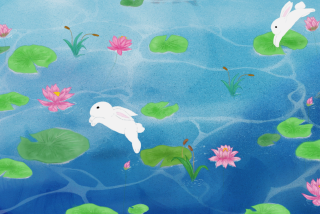Rabbit Tale Isn’t All Warm and Fuzzy
- Share via
Dear Fashion Police: I recently purchased a nice sweater that I like very much. The problem is, I noticed on the tag that the sweater’s main fabric is angora rabbit fur. How do they obtain this substance to use in sweaters? I would hate to own a sweater that was made as a result of cruelty to animals.
--CONCERNED SHOPPER
Dear Concerned: Thank you for thinking of our animal friends. Angora rabbits, which have extremely soft, thick coats, are not killed for their fur; instead, the animals are shaved or plucked and the fur is spun to produce a very plush yarn fiber. However, there is some debate about whether the methods used to get the fibers constitute cruelty.
According to a spokeswoman for People for the Ethical Treatment of Animals and several domestic breeders we spoke with, most of the mass-produced angora sweaters sold in this country use fur from commercial breeders in Asia and South America. Domestic breeders usually raise rabbits to show or for their wool, which they use themselves or sell to hand spinners or small manufacturers. English, French, Giant and Satin are the four angora breeds most commonly raised in the U.S.
PETA takes issue with foreign commercial breeders, says Lisa Franzetta, the group’s spokeswoman, because “the rabbits spend their entire lives in wire cages, and their hair is removed by plucking or shearing, which is done by strapping the rabbit to the table, and it’s struggling while it’s being shaved. It’s extremely stressful for the rabbit, and it can suffer cuts and nicks, especially if the shaver is inexperienced.”
Jennifer Turley is a breeder from California who has about 70 rabbits and harvests their wool to spin herself and sell to hand spinners. Her rabbits, she says, live in temperature-controlled barns outfitted with misters and fans, and kept in roomy hanging cages to cut down on fleas and prevent the animals from sitting in their own waste.
Turley says she hand-plucks about 98% of her rabbits every five months when they molt, or when the animal naturally sheds part of its coat. The fur, she says, comes off easily and the rabbit isn’t harmed.
She says that when shorn, each rabbit yields about 2 to 3 ounces of fur, which typically sells for $5 to $8 per ounce. It takes about 6 ounces to make a lightweight shawl. Angora and angora blend sweaters retail from about $20 to $200.
“I’ve given demonstrations where the animal is just sitting in my lap,” she says. “If we don’t harvest it, the rabbits are much like cats and are fastidious about grooming. If they ingest the fur they can die from intestinal blockage, so this is for their health too.”
Cheryl Huffman, president of the National Angora Rabbit Breeders Club, which has about 500 members, says that at a world congress on rabbits she attended about eight years ago “people were very concerned about the rabbits’ welfare. If you don’t care for the animal it’s not going to produce the wool you need. I play with my rabbits, I talk to them.”
Huffman, who lives in Oregon, also said that the NARBC polices its members to make sure the rabbits are properly cared for, and will intervene if the animals are being abused or neglected. The U.S. Department of Agriculture regulates breeders who wholesale the animals to pet stores, and will step in (with local authorities) in the event of a disease outbreak.
Wayne Pacelle, senior vice president of the Humane Society of the United States, said angoras raised for fur are not covered under the Animal Welfare Act and he knows of no other regulating agency.
So there you have it. We suggest following your conscience on this one.
Write to Fashion Police, 202 W. 1st St., Los Angeles CA 90012, fax to (213) 237-4888, or e-mail jeannine.stein@latimes.com.
More to Read
Sign up for Essential California
The most important California stories and recommendations in your inbox every morning.
You may occasionally receive promotional content from the Los Angeles Times.











